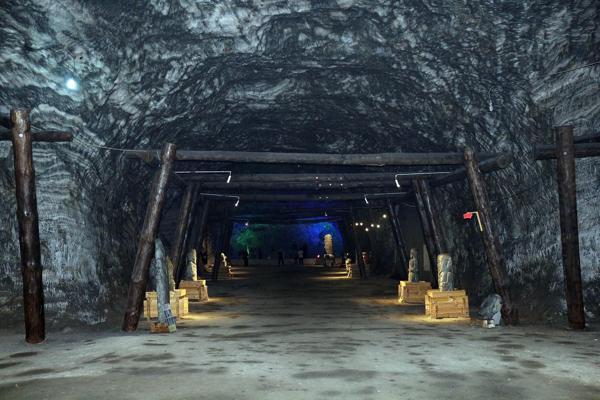Visitors flock to 5,000-year-old salt cave on first day of holiday
ÇANKIRI


The iconic salt cave, which has been closed for about three months due to COVID-19, has been reopened in the Central Anatolian province of Çankırı.
Hundreds across the region visited the cave on the first day of the Muslim holiday Eid al-Adha amid protective measures due to the coronavirus pandemic.
Tourist convoys visited the underground city, which is allegedly good for the treatment of asthma, bronchitis and other lung diseases.
The salt cave boasts Turkey’s largest rock salt reserve and is one of the significant tourism centers of Anatolia.
In the salt cave, the bodies of dead animals do not decompose; rather they are preserved by the atmosphere of the cave, where salt has been produced for 5,000 years, dating back to the Hittite period.
The body of a donkey found 200 years ago in the cave as well as that of a rabbit found 12 years ago and a snake found seven years ago are displayed in the grotto as they were found.
Many galleries comprise the cavern, from which stalactites and stalagmites of salt are suspended.
Exhibiting the mummified animals is one part of a series of projects developed by the Çankırı Governor’s Office to promote the salt cave for tourism. Noting that the region has been active for 5 thousand years, Çankırı Mayor İsmail Hakkı Esen pointed out that the cave is one of the largest salt caves in the world.
“We have enough reserves for 400 years in the country and 14 years in the world. Salt is a substance used in 14 thousand sectors. It is a raw material covering many areas from health to textile, from food to industry,” Esen said.
“This is a city, we don’t call it a cave. Whatever needs to be in the city we will do them here,” he added.
The visitor target for the natural wonder, which was visited by 200,000 people last year but remained closed due to the pandemic, is one million tourists, according to officials.
